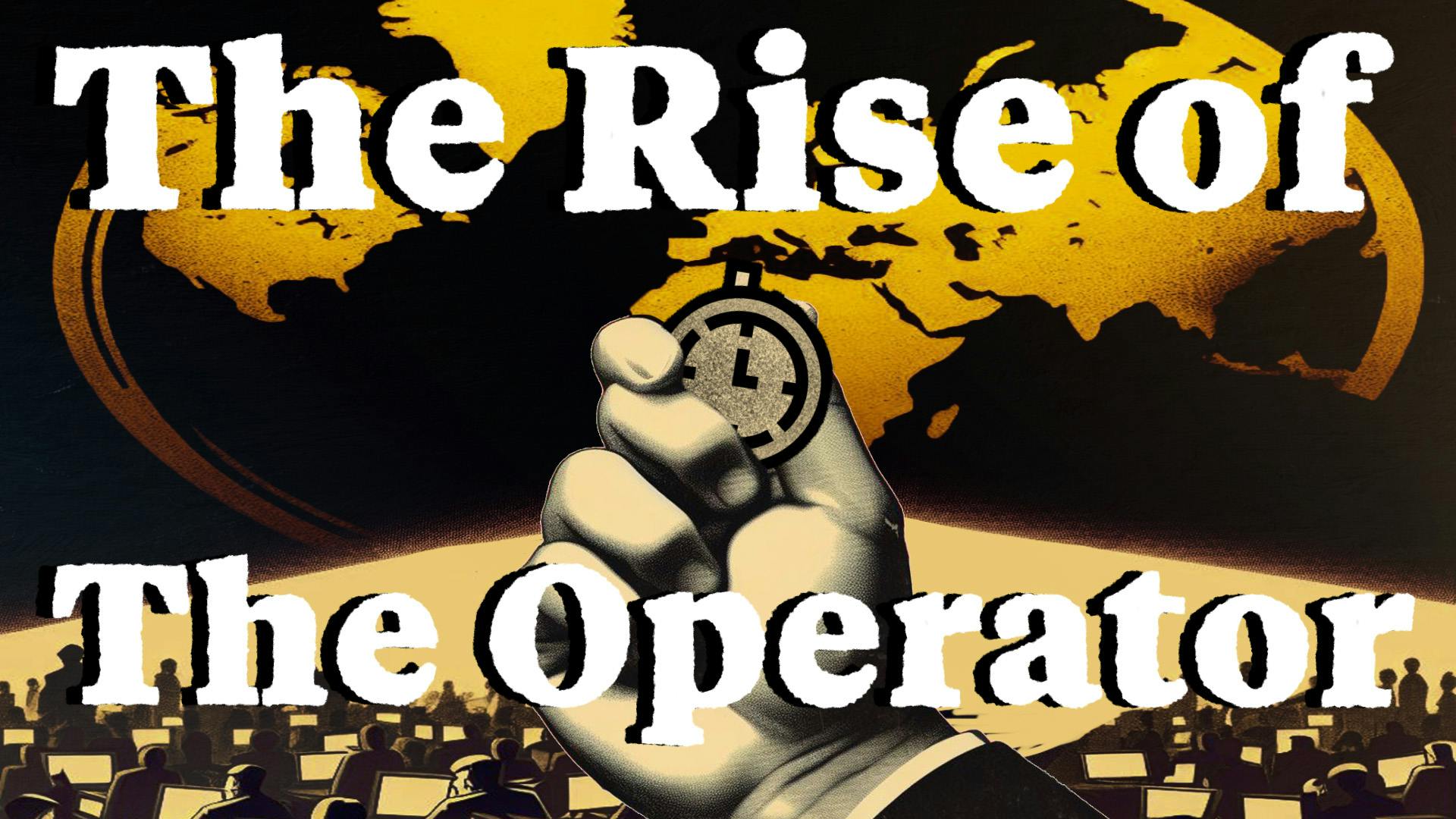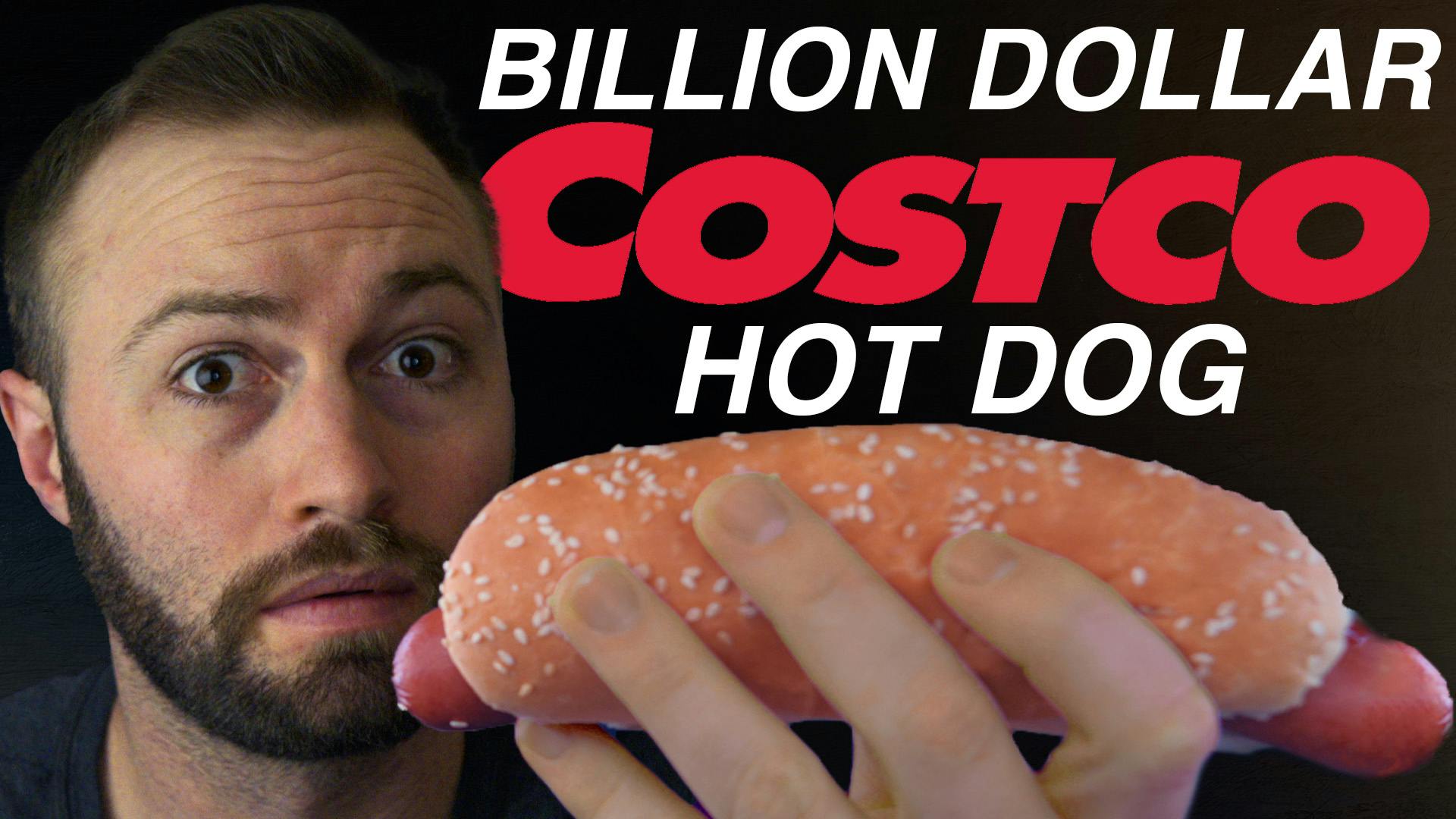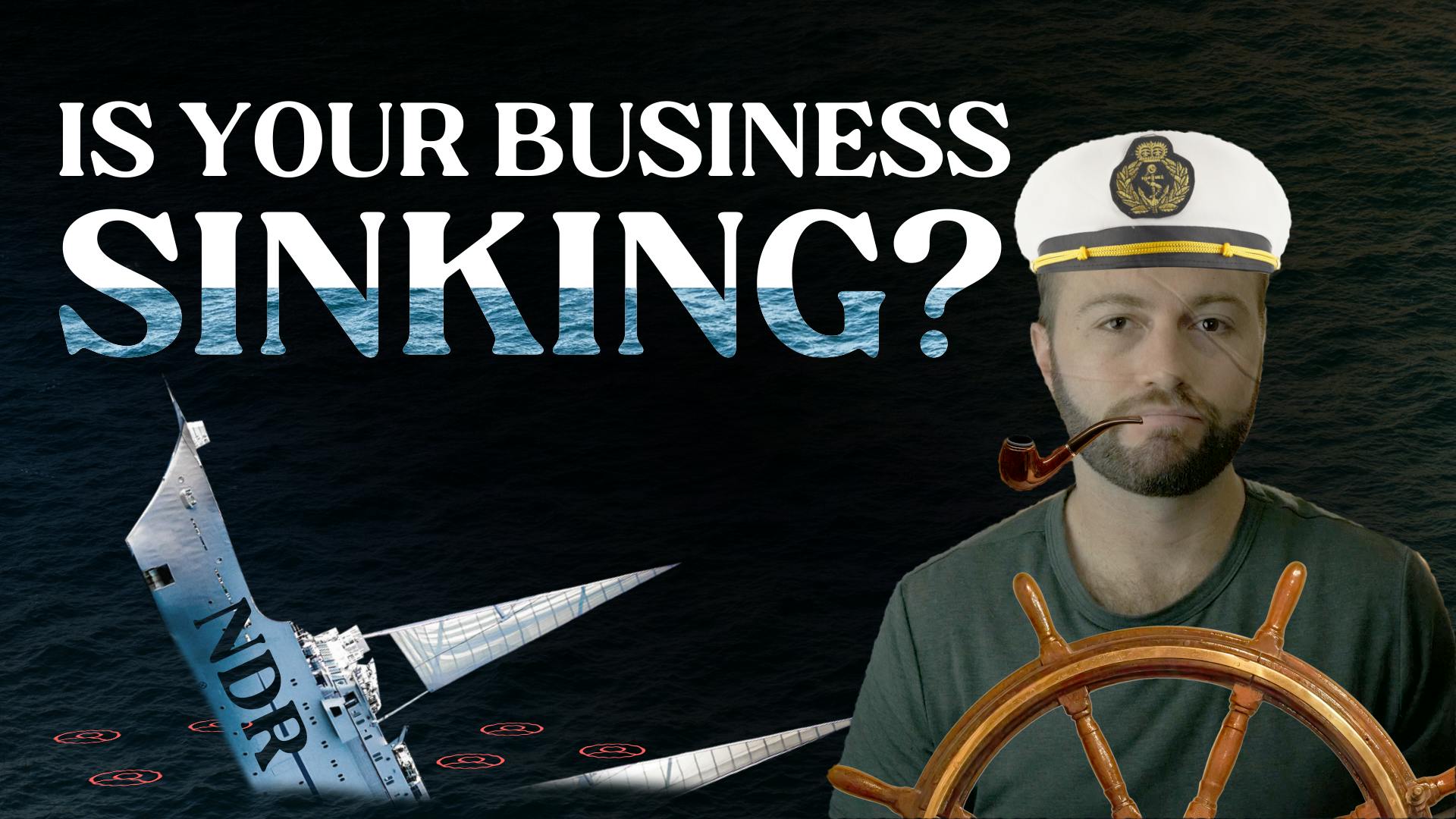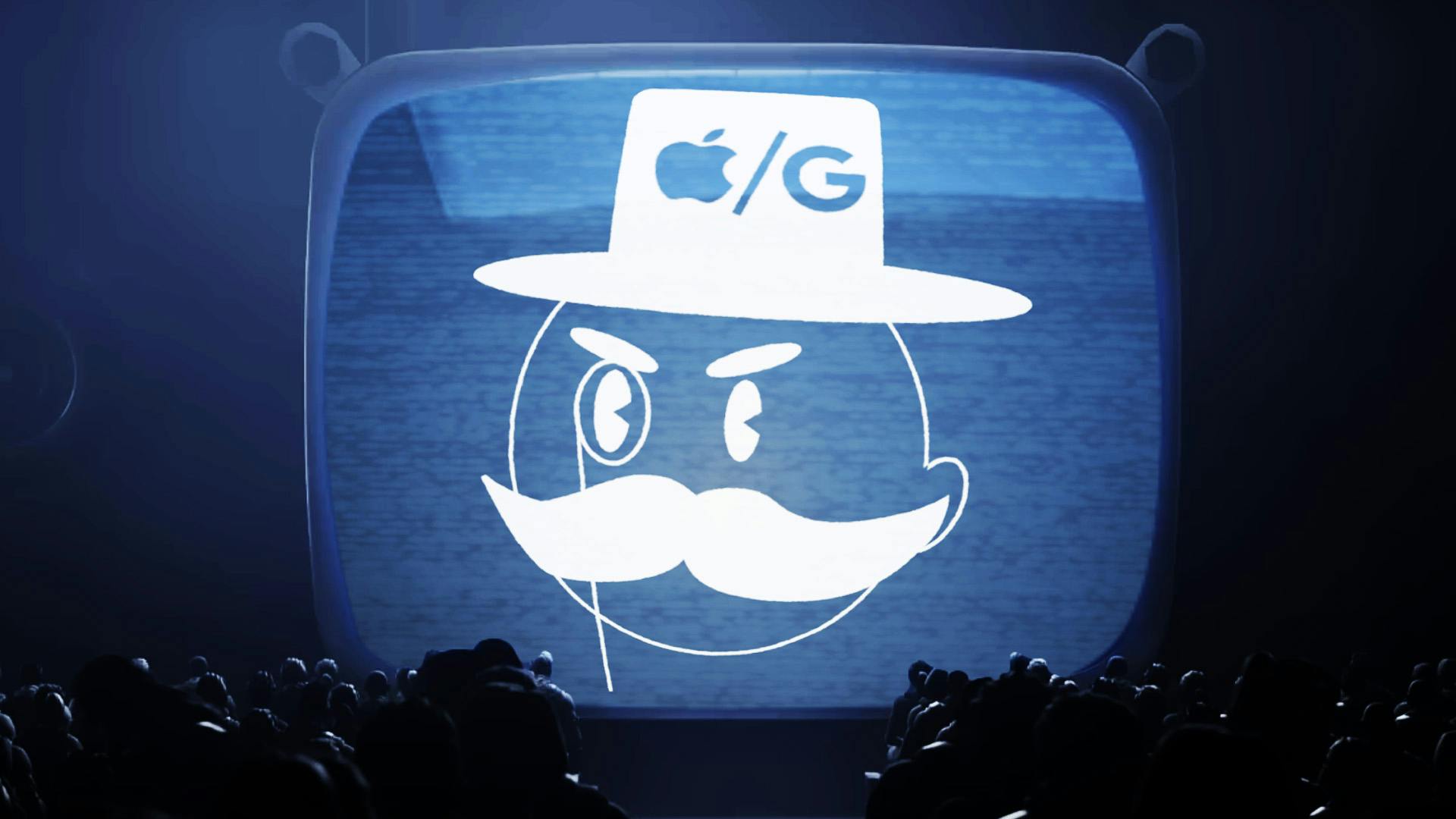
How Starbucks Lost $100 Million in Australia
A Blunder Down Under
Did you know Starbucks once lost $100 million trying to conquer Australia? It turns out, even giants like them can trip over the complexities of going global. Howard Schultz and his team thought they could simply transplant their US success overseas. But as we'll see, international expansion is anything but straightforward. It's not just about avoiding localized downturns or tapping into varying growth rates—it's about really understanding the market. And trust me, half of you aren't doing enough. So, let's break down what it takes to go global without making a costly blunder like Starbucks did down under.
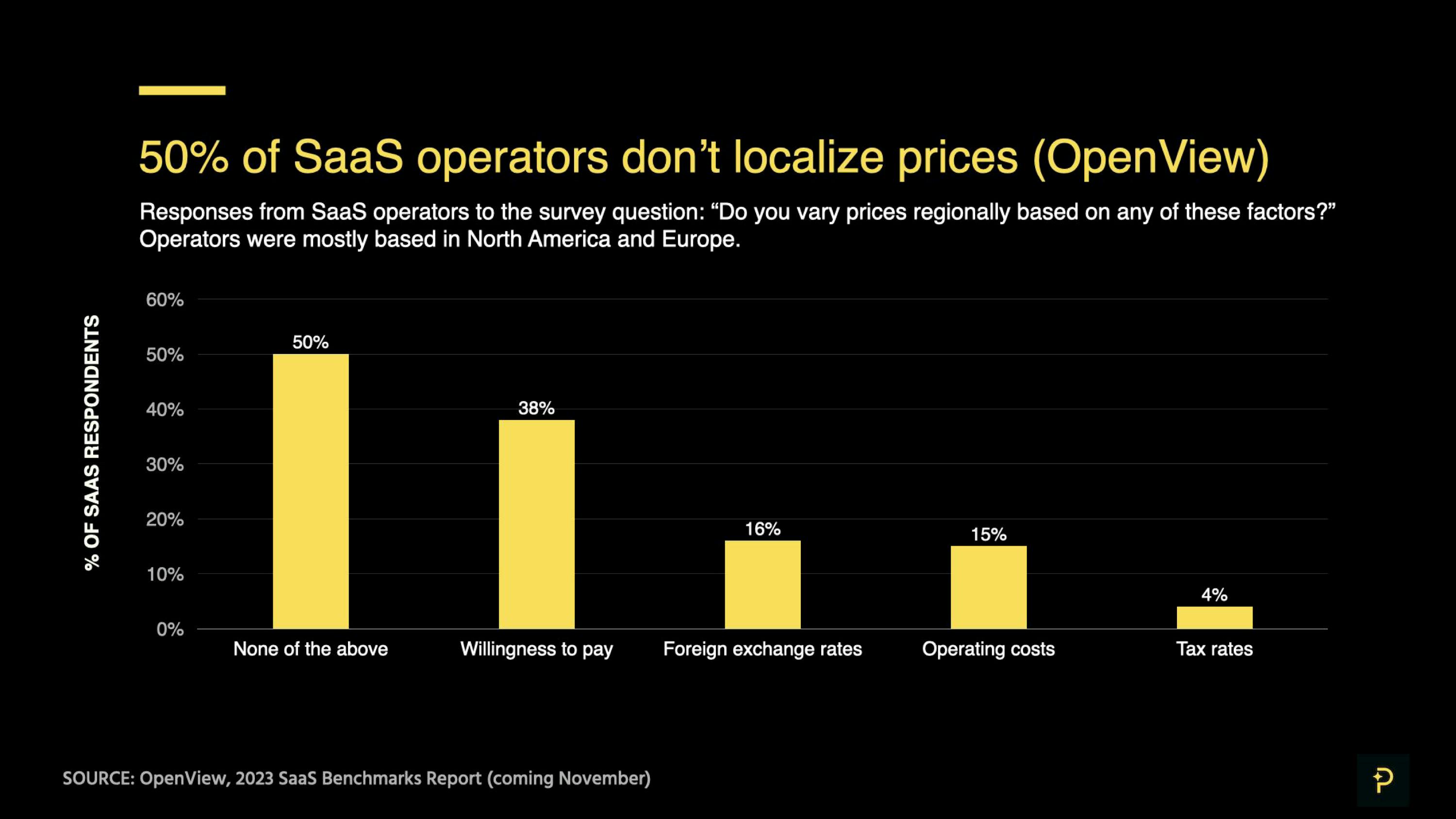
But first, if you like this kind of content and want to learn more, subscribe to get in the know when we release new episodes.
Coffee Cult Phenomenon
Starting from a single store in Seattle in 1971, Starbucks' leap to global dominance began in the 1980s with Howard Schultz at the helm. Expanding worldwide through the 90s, they made a significant mark in China by the late 90s, despite the country's tea preference. Adapting their offerings, Starbucks grew to over 4,100 locations in China. However, their Australian venture in 2000 didn't echo this success. Despite opening nearly 100 stores, they closed more than half by 2008, suffering a $100 million loss, showcasing a stark contrast in market adaptation and the complexities of international expansion.
Personalizing Internationalization
Lucas Lovell, an Australian himself and a business operator across two hemispheres, adds a personal touch to Starbucks' tale. According to him, Starbucks messed up in assuming coffee is consumed the same way around the globe.
"Coffee's a bit like wine in Australia, and I think people very much think about coffee as something that they should enjoy, as opposed to something that they just grab in the morning for a caffeine boost."
- Lucas Lovell
This misalignment with local tastes underscores the broader lesson of internationalization: the critical need for personalization. Understanding the unique preferences, languages, laws, and regulations of each market is key, whether selling coffee or SaaS products, highlighting the importance of tailoring the buying experience, even down to the transaction currency, to minimize customer friction.
Regional Variance in Willingness to Pay
Just like their preferences for coffee and local currency, different regions also have unique preferences for how much they’re willing to spend. For example, in a Paddle Study, we found that the Nordics are typically willing to pay nearly 30% more than the United States for the same software products. On the flip side, someone in Southeast Asia is willing to pay nearly 40% less than someone in the US.
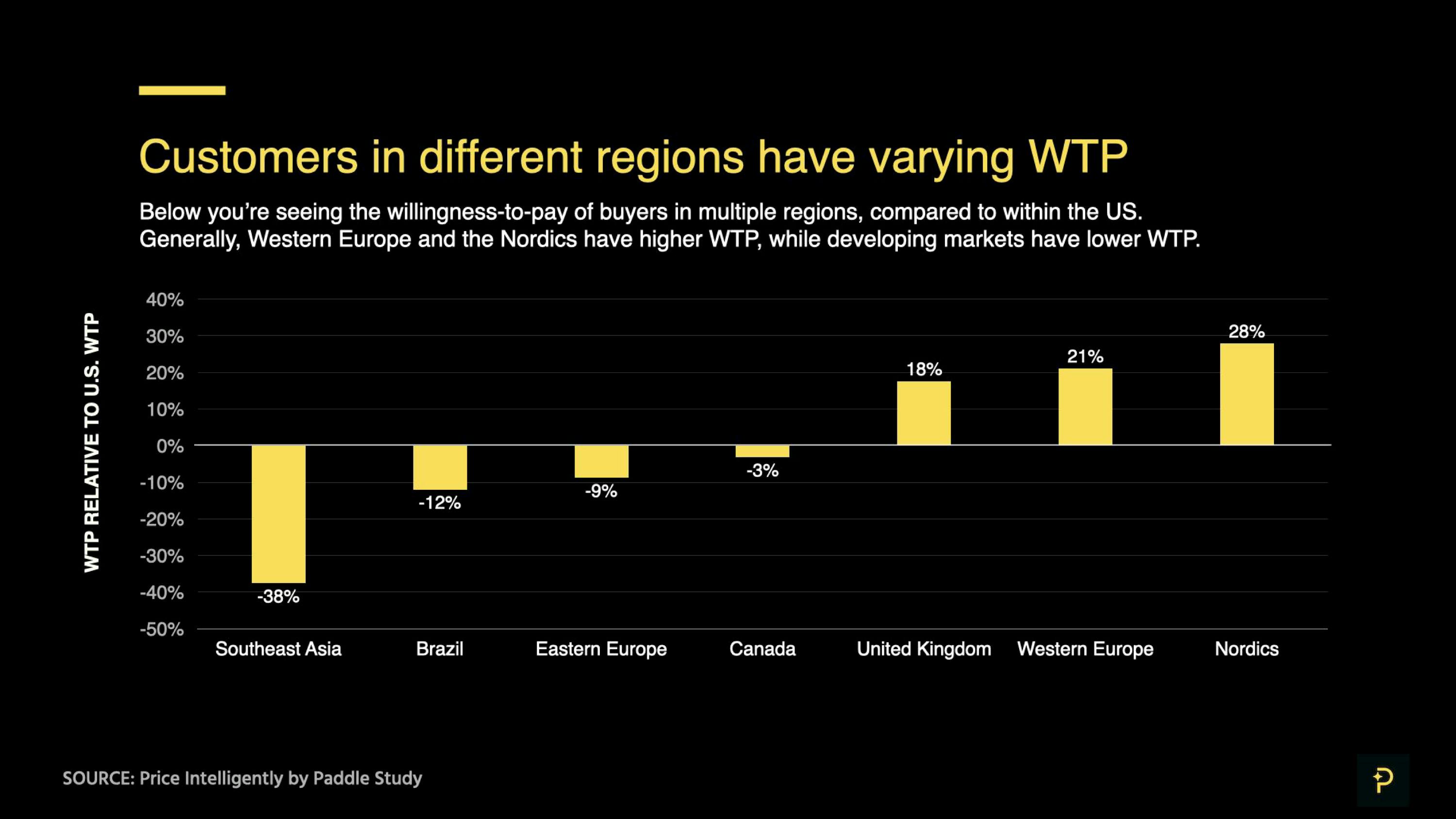
While this data backs up decisions to expand into a market where you already speak the language, it underscores the importance of going beyond cosmetic pricing changes. When going after a massive international market, you could be leaving money on the table if you’re not tapped into what they want to pay for your product.
Regional Variance in Non-Card Payments
Another element to consider with your localization strategy revolves around which payment methods you offer. But why is that? Everyone prefers credit cards right? Not necessarily. There are many different markets out there that have local payment methods and the adoption of those payment methods is higher.
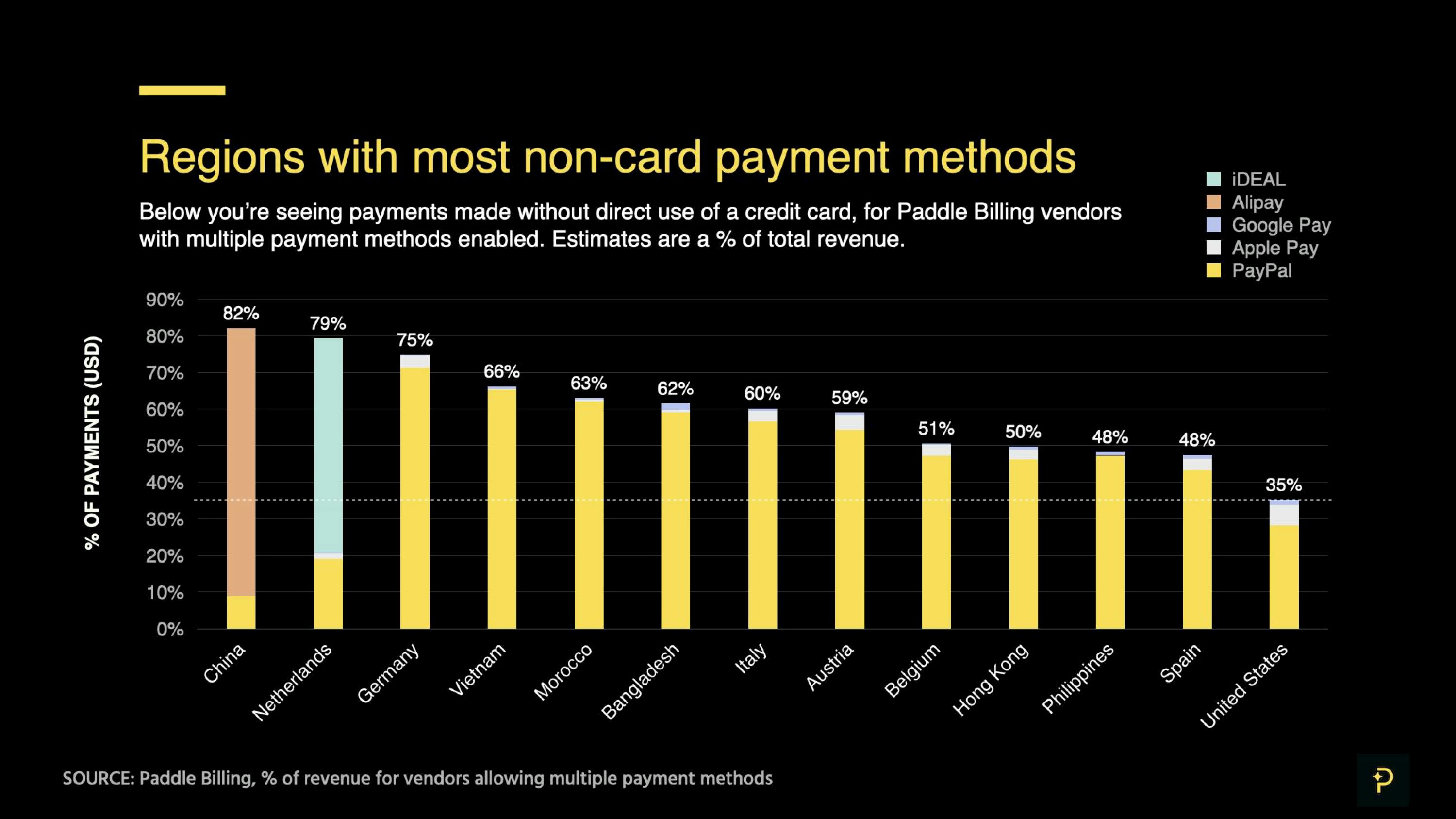
For example, when Starbucks sells coffee in China, they need to provide the option of paying with Alipay as it is the preferred payment method, drastically more than credit cards. Selling software abroad is no different. Creating a frictionless experience for the buyer is crucial.
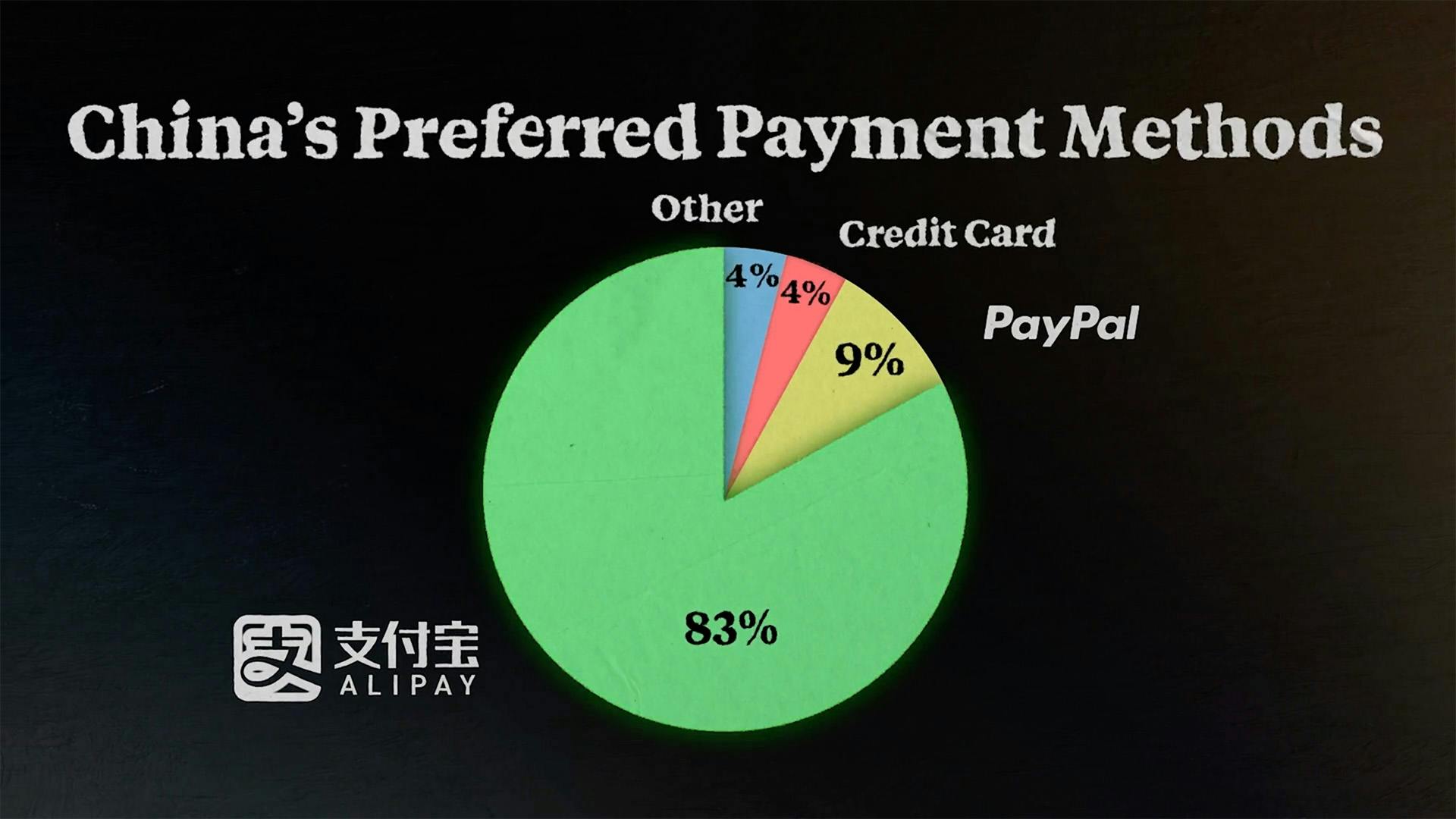
With countries from all over the world preferring different methods of payment, it's shocking to find out that only 13% of companies offer PayPal, and 9% offer Apple Pay. The numbers drop off even more significantly when we look at other apps like iDEAL and Alipay. Having a diversity of payment options can help significantly limit friction between you and your international customers.
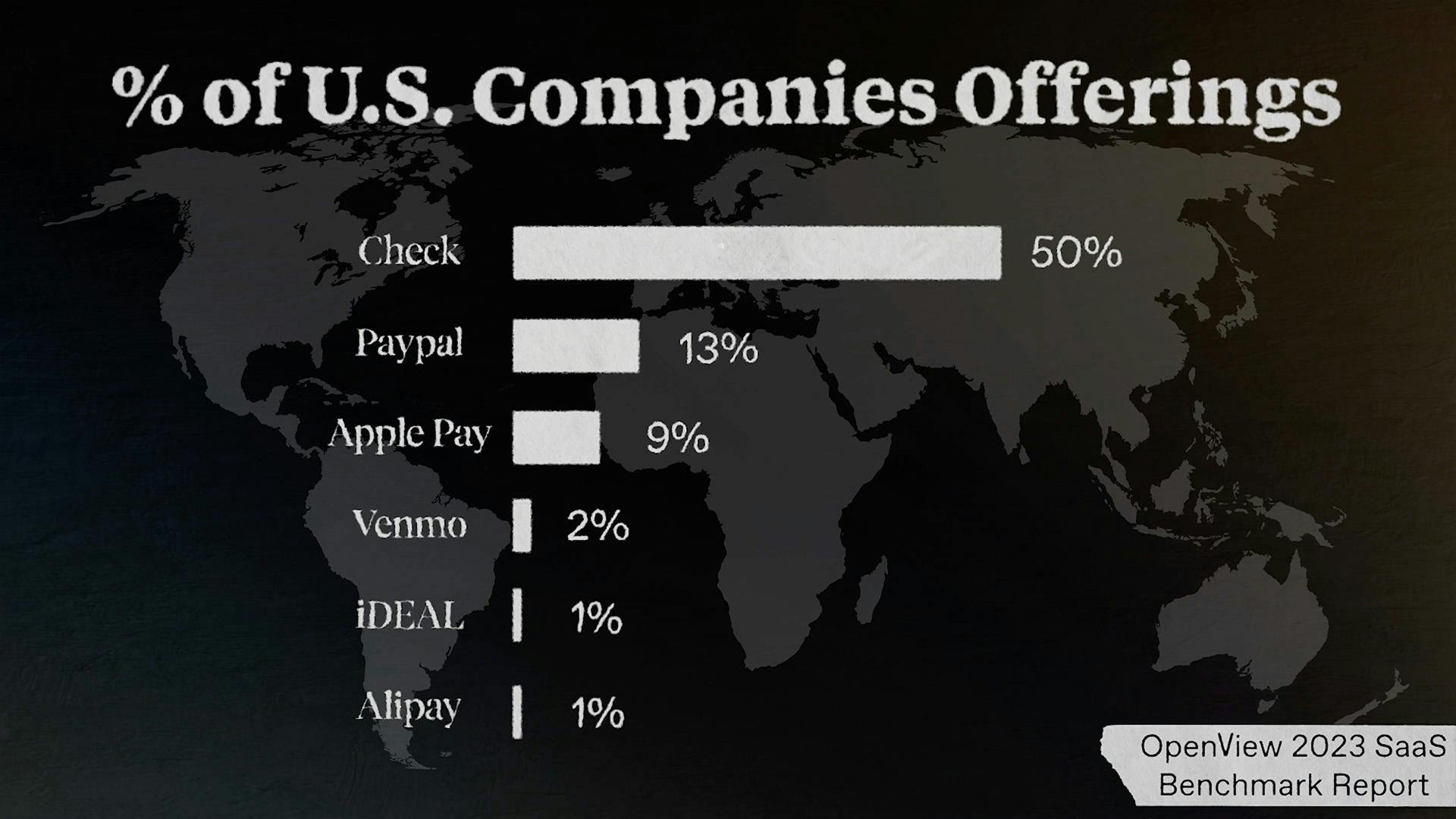
Avoid Starbucks' Mistakes
So now that we’ve got a better understanding of proper internationalization, how can you avoid a headfirst dive into the shallow end of the pool like Starbucks? Pay close attention to these three crucial steps.
1) Shift your entire strategy
This step involves deeply understanding the cultural nuances, preferences, and needs of your target international markets. Tailoring unique experiences means more than just translating your content; it involves adapting your product, marketing, and customer service strategies to align with local expectations and norms. This level of customization shows that you value and respect the local culture, which can significantly enhance customer loyalty and brand perception.
2) Build a dedicated team
Creating a team with diverse functional expertise ensures that all aspects of the international expansion are covered. This team should include members from marketing, to understand local market dynamics; sales, to adapt selling strategies; legal, to navigate local regulations; and product development, to customize offerings. Such a cross-functional approach ensures a unified and coherent strategy that addresses all potential challenges of entering a new market.
3) Break the world into tiers
By categorizing markets into tiers, companies can focus their resources and efforts where they are most likely to succeed. This approach allows for a phased expansion strategy, starting with the most accessible markets (Tier 1) and gradually moving to more challenging ones (Tier 2), while avoiding markets that currently present too many barriers (Tier 3).
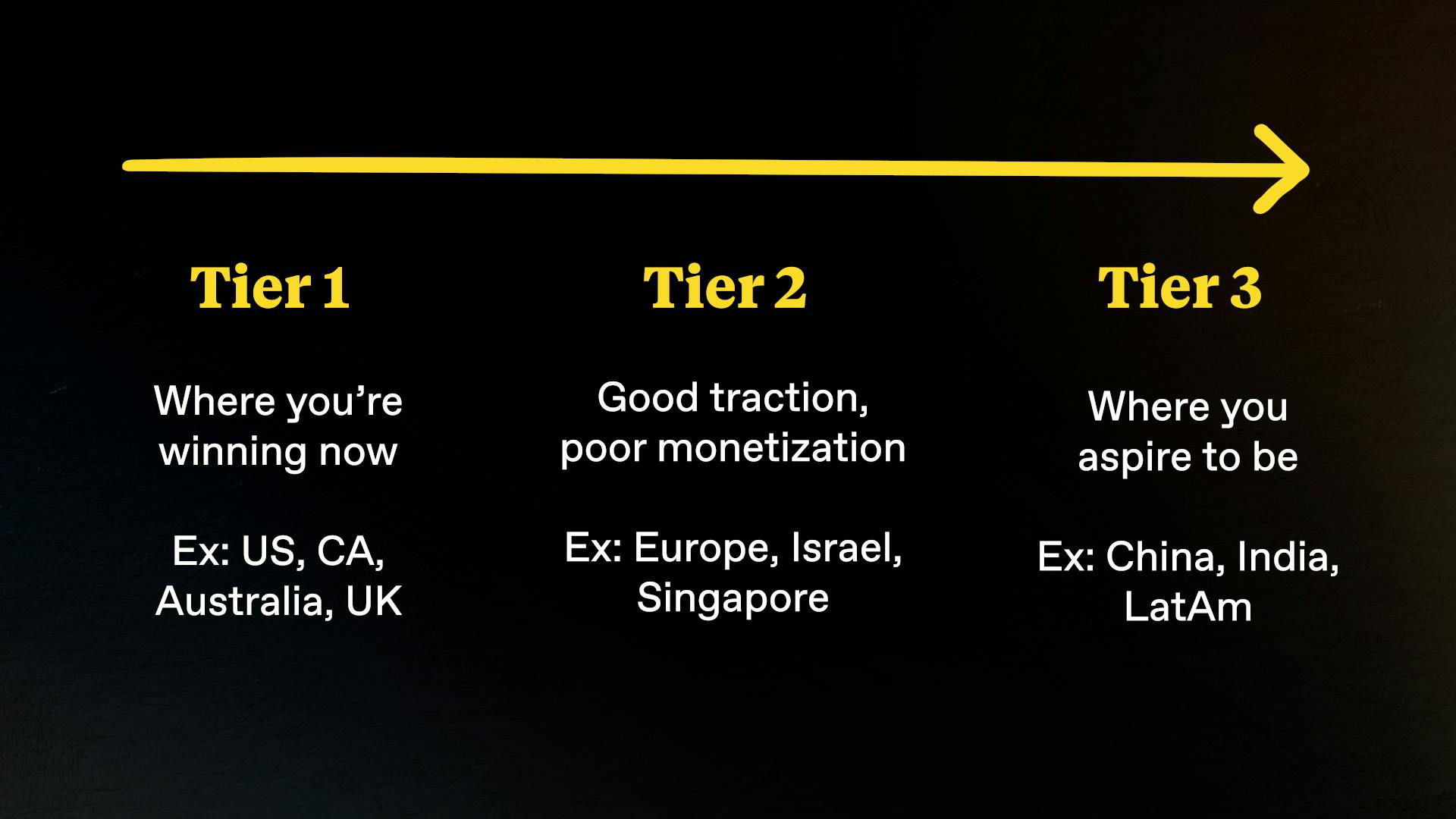
What's next?
Sign up to get our complete free guide on internationalization that we'll be shipping in the next couple weeks.

If you like this kind of content and want to learn more, subscribe to get in the know when we release new episodes.
00:00:00:02 - 00:00:19:23
Ben
Did you know that Starbucks lost $100 million when they expanded into Australia? Being a phenomenon in the United States wasn't enough for CEO Howard Schultz to initially succeed. And if it's hard for a massive success like Starbucks, it's probably going to be hard for you, too. You see, expanding internationally is a lucrative opportunity for anyone looking to scale a company.
00:00:20:02 - 00:00:38:20
Ben
Not only does it offer protection from localized downturns, but growth rate by region can vary by nearly 50%, and all you have to do is take your product and slap a new label on it with a language that fit the market. If only it were that simple. Starbucks failed because they didn't do their homework, and the mistakes of their past could be your future.
00:00:38:22 - 00:00:59:17
Ben
And I have the data that says half of you aren't even doing the bare minimum. But fear not. We're going to identify the opportunity internationalization offers, how you can capitalize on it, and of course, figure out how you can avoid a multi-million dollar blunder down Under like Starbucks. Starbucks began as a single store in Seattle, Washington, in 1971.
00:00:59:19 - 00:01:26:08
Ben
However, the company's transformation into a global coffee giant took off in the 1980s when Howard Schultz joined as CEO. Opening locations all over the globe into the 90s. In 1999, Starbucks expanded into China and saw huge success. Although the country had a preference for tea, Starbucks strategically expanded to tea products and branded themselves as a higher status business, growing to the tune of 4100 locations across mainland China.
00:01:26:12 - 00:01:49:06
Ben
Shortly after their success in China, Starbucks had their sights set on Australia. They opened their first store in 2000 with nearly 100 stores opened in the years following. But more ribbon cutting ceremonies weren't translating into higher concept revenue. By 2008, Starbucks had closed over half their Australian locations, catering to specific cultural offerings like they had with China. And tea wasn't enough.
00:01:49:08 - 00:02:00:20
Ben
They lost over $100 million and this hits close to home for Lucas level. Not only does he have experience operating businesses in multiple hemispheres, he also happens to be an Australian himself.
00:02:00:22 - 00:02:23:06
Lucas
I am indeed Australian and I also love my coffee. I'm actually sort of proud of it. Is that weird? Coffee's a bit like one in Australia, and I think people very much think about coffee as something that they should enjoy, as opposed to something that they just grab in the morning for a caffeine boost. But Australians are much more interested in like funky interiors, nice background music, more artistic side of coffee.
00:02:23:09 - 00:02:29:16
Lucas
And Starbucks didn't adapt their offering in that positioning based on that buyer expectation.
00:02:29:16 - 00:02:38:05
Ben
The failings of Starbucks in Australia actually highlights something universal about internationalization. Personalization should be at the core of your strategy.
00:02:38:07 - 00:02:48:21
Lucas
Your buyers are different. Fundamentally, the language is different. The laws are different. The regulations are different. And that is true irrespective of whether it's a cup of coffee or whether it's a CRM SaaS product.
00:02:48:21 - 00:03:02:00
Ben
For example, simply catering the experience to your customers by selling products in their local currency can help massively reduce friction during the buying experience. But remember, this requires more than just changing the currency symbol.
00:03:02:06 - 00:03:20:02
Lucas
There are things that Starbucks did that a lot of software companies don't do. An American company going to Australia and selling coffee in US dollars is utterly ridiculous. Like that makes no sense at all. Right? You would never go to Australia and sell coffee in US dollars. That never happens. Buying software. Tons of companies do that.
00:03:20:05 - 00:03:40:23
Ben
Just like their preferences for coffee and local currency. Different regions also have unique preferences for how much they're willing to spend. For example, in a study, we found that the Nordics are willing to pay nearly 30% more than the United States for the same software products. On the flip side, someone in Southeast Asia is willing to pay nearly 40% less than someone in the US.
00:03:41:03 - 00:03:48:21
Lucas
Adjusting pricing and adapting your business based on willingness to pay is something that is typically overlooked by a lot of software companies, especially.
00:03:49:01 - 00:04:09:10
Ben
While this data backs up decisions to expand into a market where you may already speak the language. It underscores the importance of going beyond cosmetic pricing changes when going after a massive international market, you're going to be leaving money on the table if you're not tapped into what they want to pay for your product. This is a lesson that Lucas learned when he took his tourism centric business abroad.
00:04:09:12 - 00:04:29:09
Lucas
The thing that initially drew us to France, just to sort of relate that back to the experience. We're in Australia, which is a country of 20 to 23 million people with a medium sized tourism industry going to a juggernaut of the tourism industry, one of the most visited countries in the world, right? Where the market size was, we estimated at ten what it was in Australia.
00:04:29:13 - 00:04:36:07
Lucas
It does create other opportunities as well, right, in terms of being able to leverage a higher willingness to pay in different countries.
00:04:36:07 - 00:04:44:09
Ben
Another element to consider with your localization strategy revolves around which payment methods you offer. But why is that? Everyone prefers credit cards, right?
00:04:44:11 - 00:04:56:16
Lucas
It's easy to think that everyone buys everything with cards powered by visa and Mastercard. It's not true. There are lots of markets out there which have local payment methods, of which the adoption of those payment methods is higher.
00:04:56:18 - 00:05:12:12
Ben
For example, when Starbucks sells coffee in China, they need to provide the option of paying with Alipay, as a lot of people use it as their preferred payment method, drastically more than credit cards. Selling software abroad is no different. Creating a frictionless buying experience for the buyer is absolutely crucial.
00:05:12:16 - 00:05:23:01
Lucas
Certain countries stand out like Brazil is another great example where this is changing quite quickly. So Pix is a payment method in Brazil that is now being used more than cards.
00:05:23:03 - 00:05:45:06
Ben
With countries from all over the world preferring different methods of payment. It's shocking to find out that only 13% of companies offer PayPal and 9% offer Apple Pay. The numbers drop off even more significantly when we look at other apps like Ideal and Alipay. So now that we've got a better understanding of proper internationalization, how can you avoid a headfirst dive into the shallow end of the pool like Starbucks?
00:05:45:08 - 00:06:01:09
Ben
Pay close attention to these three crucial steps. First, you need to shift your entire internationalization strategy. It's not a quick tactic that can be completed in a day. It requires building strong bridges towards your customers and tailoring a unique experience specifically for them.
00:06:01:09 - 00:06:25:11
Lucas
As my French got better when I was in France. The dynamic of the relationship that I have with my customers transformed dramatically. Localization shows that you really, really care about the buyer. You care about the experience. He obsess over every touchpoint that they have with your business and that customer centricity and that customer first. Thinking in the context of internationalization is super important.
00:06:25:13 - 00:06:33:10
Ben
Second, you need to form a specific internationalization team. This group needs to be cross-functional with representatives from multiple areas of your organization.
00:06:33:11 - 00:06:51:11
Lucas
We call it a bit of a tag team here. I think that's a term that got that gets thrown around a lot in tech, which is effectively a small group of people representative of a broad set of functions. You need marketing involved, looking for new go to market motions and understanding the dynamic of buying in that country. You need sales involved from a SIM for a similar reason.
00:06:51:15 - 00:06:54:15
Lucas
You need labor involved. Like do we need to set up that locally?
00:06:54:16 - 00:07:01:02
Ben
Last, you need to break the world into three tiers of regions. This helps you prioritize rather than go after everyone at once.
00:07:01:04 - 00:07:26:19
Lucas
The concept of a tier list is basically to group all of your opportune cities, so your tier one markets are probably the that the markets that you're currently in. So your local markets and markets that you might have gone and already successfully expanded into, and you're operating really well there. Tier two, markets and countries that have a similar set of characteristics that present really interesting opportunities for you to expand.
00:07:26:19 - 00:07:52:04
Lucas
But they probably require a little more strategic thinking around the how. And in tier three countries or markets are probably those places that you shouldn't really bother with right now. Legal things or regulatory things, or a fundamental difference in how business gets done. Build a map right of of of all the key markets and then map them based on a number of characteristics and classify them into those tiers, and then build out your strategy accordingly.
00:07:52:05 - 00:08:03:11
Ben
Click right here for an in-depth guide on internationalization, including data we didn't have time to cover in this video, or click here for the full interview with Lucas from paddle. I'm Ben Hillman and I'll see you next time.

